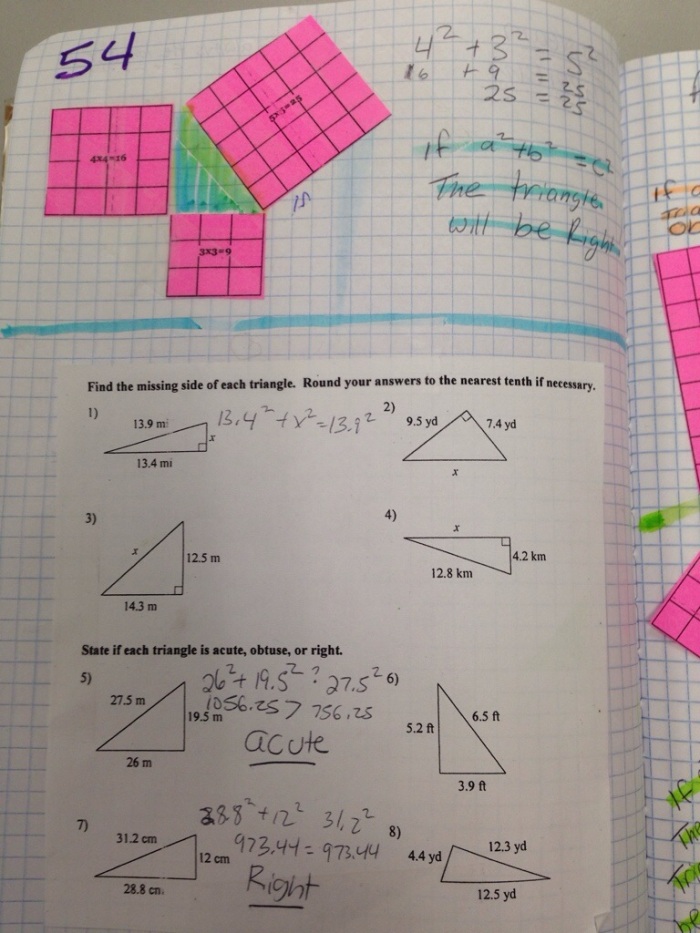I really struggled planning the next six weeks of the school year for geometry. Although I hate it, the big fat state testing happens mid March. Probability & statistics is addressed heavily, and since my students have not seen it much, and it is important, and it is included in our states adoption of the CCSS for geometry, I decided that I should do a quick basic review of it. I may be cramming it in, but it will be fun goshdarnit!
This hexter starts with finishing up some real world trig, measuring with clinometers and a fun triangle pile up task as a performance assessment. Then we will collect data & make scatter plots, finding equations of the line of best fit and making predictions,and of course, this interactive note page. I decided not to use calculator regressions because my students need to work on developing fluency writing linear equations anyway. After that we will experiment with mean and median and how they are affected by outliers. We will do Jellyblubbers to help develop understanding of sampling strategies, although if I need more time with other skills, then Jellyblubbers will not happen and I will be sad.
I need to allow enough time to have lotsa fun with probabilities too. I am going to ensure they understand compound probabilities, and’s, or’s, independent & dependent events. I do not have a lot of resources for the probability week, so i’ll either have to create some (and I’ll share!) or you can share your awesomeness in the comments.
After the state testing we will do surface area & volume. I’m excited to introduce surface area with Mr. Stadel’s file cabinet post it task. Then will do some interactive notes on surface area & some practice with various irregular solids. Then on to volume. I am going to go with some of these tasks, combined with notes & practice.
My plan is not as concrete as it normally is. I am not sure why, but I know I figure it all out. I just can’t think about things that will be happening after spring break. Also, I am in a little bit of a panic over how the heck to teach my programming class.
Here is the learning target tracking sheet:






















